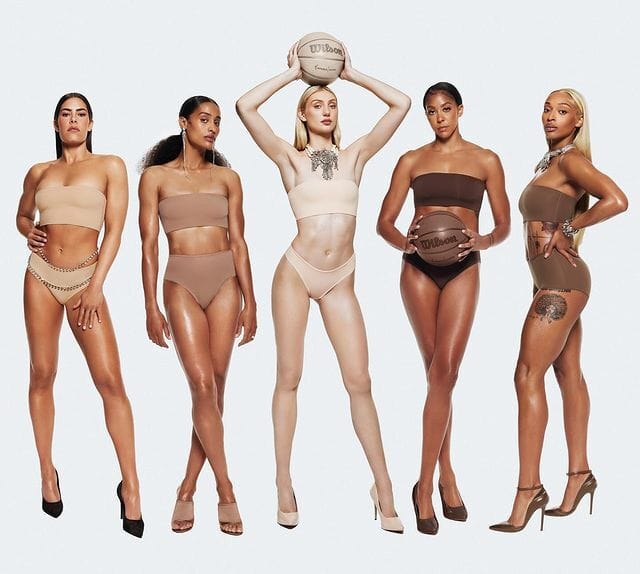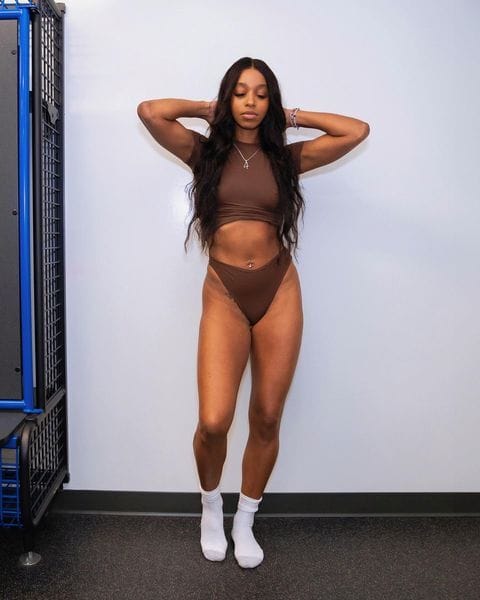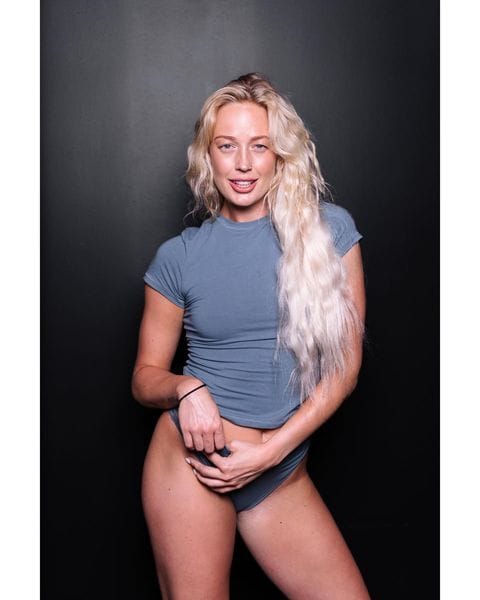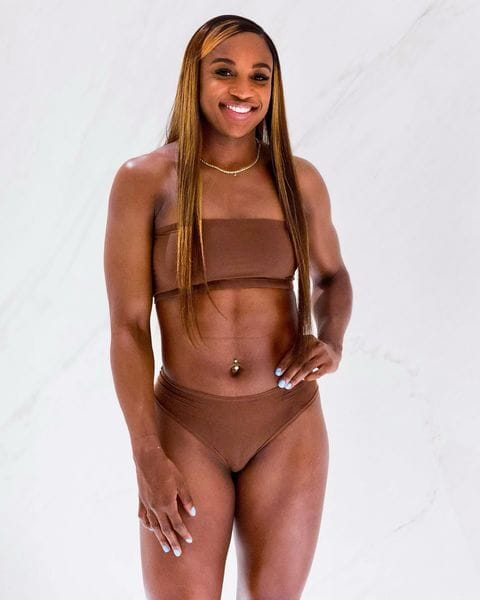Thank you, as always, for being here. Paid subscriptions allow me to dedicate more time to this newsletter. It’s not just the time I spend writing, but the time I spend planning, researching, and reporting that is supported by upgrading.
If you want to pay for a subscription but don’t want to give money to Substack, feel free to use my Venmo or PayPal. Just reply to this email and let me know you’ve sent it so I can add your email to my paid list!
The WNBA is the most gender-diverse league in the world. Their athletes run the gamut from cishet and hyperfeminine, to trans and non-binary and gender-expansive, to butch and stud and masc-of-center, and everywhere in between. It’s one of the league’s biggest selling points, imo, and something I recently discussed with Dr. Nef Walker when she said that the diverse expressions of gender makes the WNBA “the most inclusive sport organization in the world.”
In the past, the league has been criticized for leaning too heavily on marketing their athletes as conventionally attractive to mainstream (read: straight, white) audiences, to the exclusion of players who don’t fit into those norms. This dynamic was a huge part of Sue Bird’s recent documentary, Sue Bird: In the Clutch, and the public-facing narrative currently seems to be that the W is learning and growing from their past mistakes.
When the WNBA announced their new partnership with Skims, Kim Kardashian’s underwear company, last fall, I was critical of the decision to partner with a Kardashian but I was at least hopeful that any campaign that came out of the partnership would be inclusive and gender diverse, since Skims makes undergarments for any and all gender expressions.
The first look at the campaign has arrived and I am… disappointed, to say the least.
Kelsey Plum, Skylar Diggins-Smith, Cameron Brink, Candace Parker, and Dijonai Carrington all look incredible, don’t get me wrong. And they are all more than deserving of an underwear campaign and I love the fact that several of them have said their participation in the shoot made them feel empowered. I love Carrington’s queer, high-femme expression and Parker is a gay icon, as well. I also understand that this particular campaign is for the flesh-toned collection, and these athletes are showing off the range of tones that the pieces come in (though I can’t help but notice there is no player modeling the darkest shade).
But I wish there was some variety when it came to the gender expression of the athletes who were included here. All five of these women are traditionally feminine and conventionally attractive and wouldn’t look out of place in the pages of any fashion magazine. Beautiful women play in the W, that’s true, but they’re not the only athletes in the league and the marketability and desirability of the league does not rest on the players who conform to a certain kind of femininity. Also, they’re wearing heels?
“Wouldn’t it have been cool if, say, there was representation for a darker shade skin, a more full bodied voluptuous woman, and perhaps a stud expression of femininity?” Ros Gold-Onwude, a WBB broadcaster, asked on X. “All this is what makes the W unique!”
When you go to the landing page for the Skims WNBA collection, you can see that this “Fits Everybody” line of underwear comes in other cuts, including boyshorts. And the products are modeled on different body shapes on the website itself. So why don’t the promotional images represent those options?
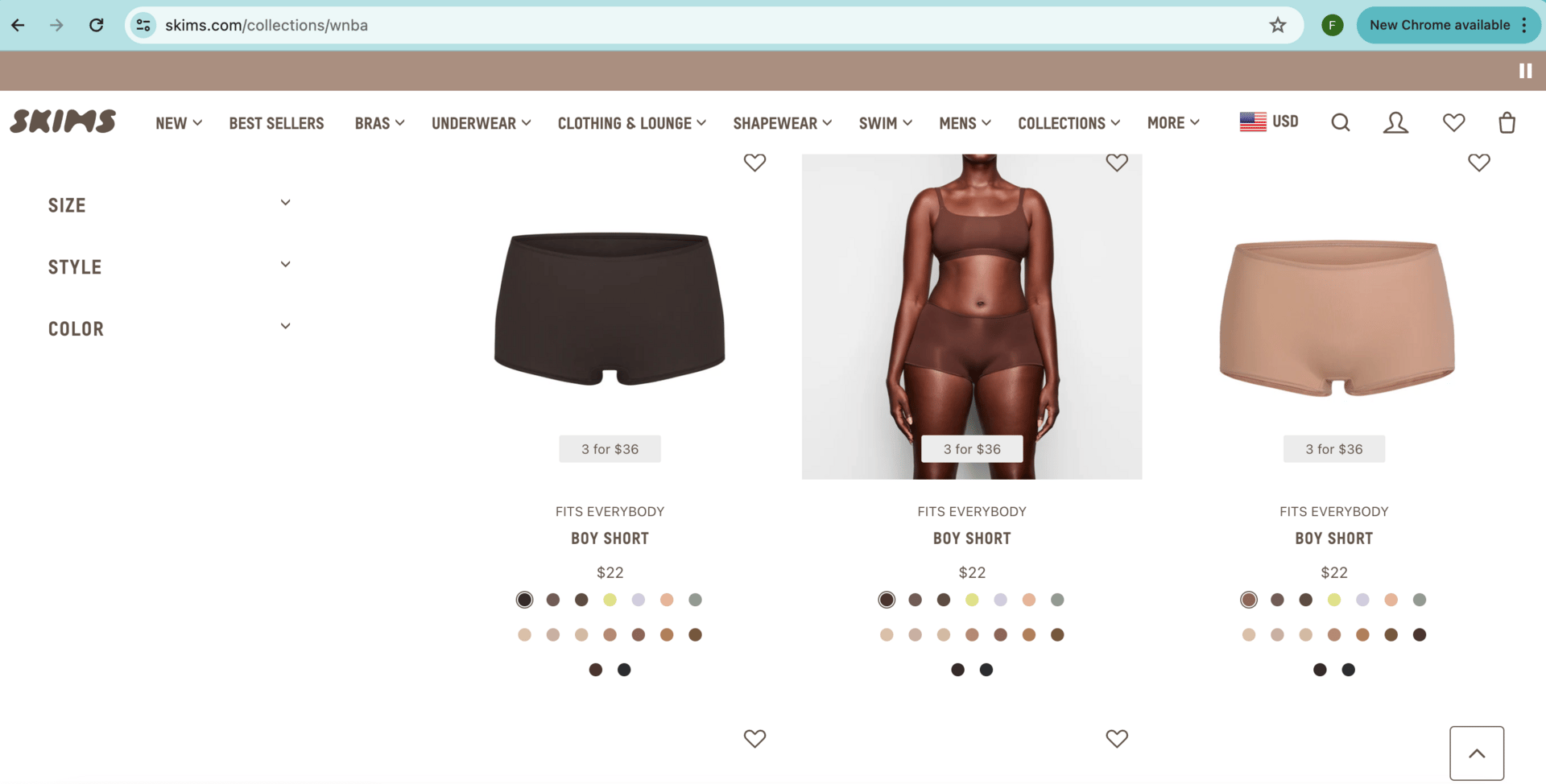
It feels like the 2022 Sports Illustrated “Swimsuit Issue” debacle all over again, where the league chose five feminine women to model traditionally feminine bathing suits. Players themselves have called out the league’s double-standard on this, but it doesn’t seem to be improving.
“I love Sports Illustrated’s attempt to be more inclusive and amplify women in the W,” Courtney Williams said on Twitter after the swimsuit issue dropped. “At the same time though it would of been raw to see a sleek lil sports bra & some shorts swaggin’. There’s more than one way to look sexy, and I hope in the future we can tap into that.”
This would have been the perfect place to do just that. Natasha Cloud called out the lack of gender diversity in the campaign on X. It’s embarrassing that players themselves need to keep taking to social media to point out the ways the league’s marketing is failing the athletes.
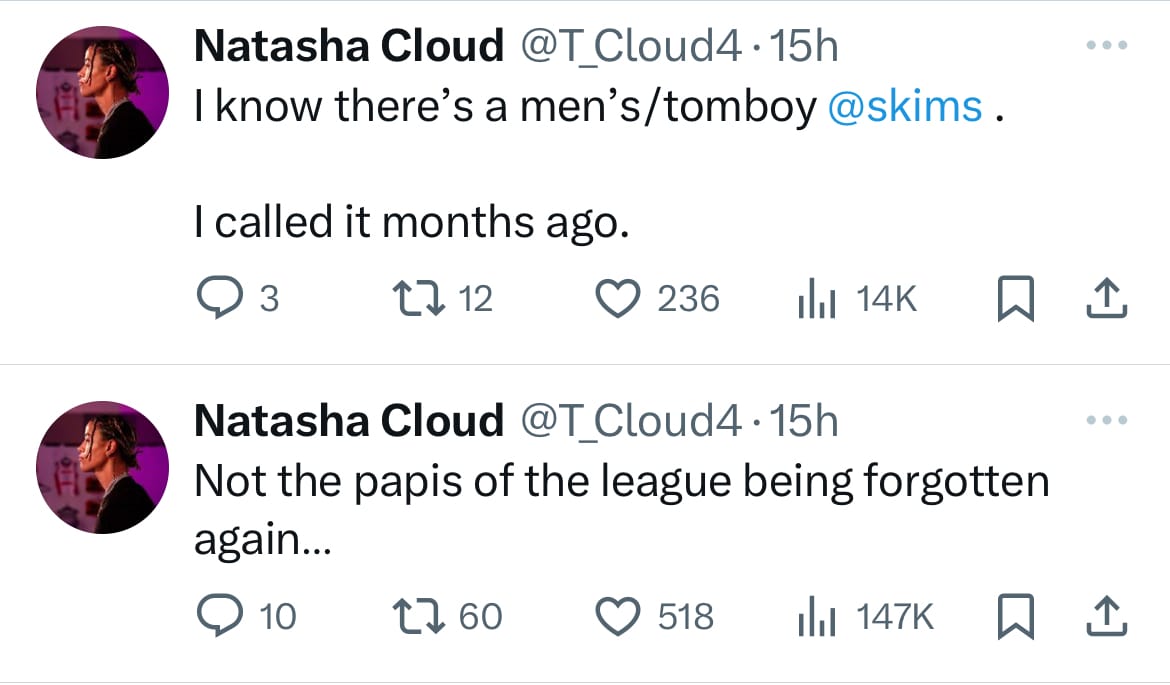
Chelsea Gray posted photos to her own Instagram page showing off more gender neutral selections from the Skims lineup but those images aren’t (yet) being promoted on either the WNBA or Skims accounts. Other W players are posting their own images under the #skimspartner hashtag, as well (some examples are below).
“Our brand DNA is rooted in inclusivity, representation and women’s empowerment, which are values shared with the WNBA,” Kardashian said in a statement about the campaign. “We are honored to be the official underwear partner of the league and look forward to continuing our work together throughout the season.”
Perhaps there are plans to rollout other player campaigns throughout the season or in the future but, even still, the choice to feature these photos in the initial campaign sends a very clear message about the image the league wants to promote.
“It's all a popularity contest and politics in wbb,” Jonquel Jones tweeted in 2022. “In mbb you just gottah be the best. In wbb you gottah be the best player, best looking, most marketable, most IG followers, just to sit at the endorsement table. Thank God for overseas because my bag would've been fumbled.
“Not to mention me being a black lesbian woman,” she added. “Lord the seats disappearing from the table as I speak.” It’s a dynamic Katie Barnes explored even further in their profile of Jones for ESPN that year.
“It’s long past time to celebrate and uplift queer, masculine-of-center aesthetics as desirable,” I wrote in 2022, with words that feel like they could apply to the Skims campaign I’m looking at today. “The players—with their range of gender expressions—make the league what it is, and they deserve to be uplifted and celebrated and marketed for exactly who they are.”
But judging by the reactions on social media, I seem to be one of the few people who is critical of the direction this campaign has taken. Maybe I’m just a buzzkill. Or maybe I don’t think it’s asking too much for the league to highlight their true range of players.
